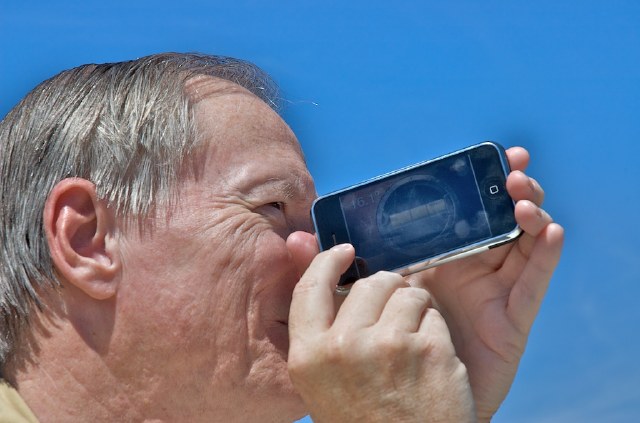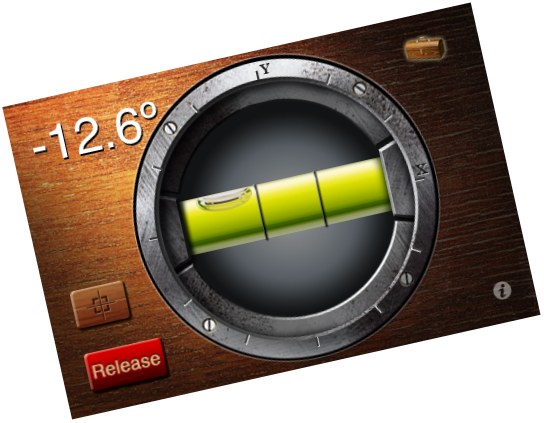Last updated: 14 April 2009
|
Last updated: 14 April 2009 |
In preparation for observing the 22 April 2009 occultation of Venus from Oracle Observatory, I began to wonder if the event would be visible for me since the moon and Venus will be low in the east at the time of the occultation. There is a low hill just to the east of my location but I had never measured its altitude (nor needed to) until now. Two options occurred to me: use a protractor or use one of my telescopes. Then it hit me: use my Apple iPhone!
I had previously installed a handy little iPhone application called "iHandy Level Free" from iHandySoft Inc. It is one "tool" from a larger, more full-featured application called "iHandy Carpenter (www.ihandysoft.com/carpenter/)" that sells for $1.99 on the Apple App Store. The free application is intended to be used to measure the tilt of any object, such as a table top or shelf. However, it can also be used to measure the altitude (in degrees) that an object is above the horizon. The application uses the iPhone's accelerometer to determine the iPhone's orientation to a fairly good degree of accuracy.
The app works with a tilt up to 45 degrees. Before I went to Oracle to make the measurement, I compared the app's readout to a protractor. It seemed accurate enough (within a couple of degrees). Of course, for precise measurements of the altitude of obstacles for astronomical purposes (i.e., rising/setting of objects) you will need more precision. But for my purposes, it would let me make a quick estimate of whether the upcoming Venus occultation would be visible from Oracle Observatory.
To measure the altitude of an object (building, hill, pole, etc.), start the application, press and hold the "Hold" button, and sight along the side (the Home button can be at either end).

With the line-of-sight pointed at the object, release the "Hold" button when you want to take the measurement. This will freeze the display so that you can note the value. You can then also save an image of the display by simultaneously pressing the Sleep/Wake button and the Home button. The photo will appear in the Camera Roll album in the Photos application and can then be synced to your computer (Mac or Windows) or emailed. Press the "Release" button (was "Hold") to start over and take another measurement.
Here is an example of the display (tilted to indicate the angle of the iPhone):

My measurements showed the hill to be 9-13 degrees above the horizon, depending on the azimuth of the measurement. This height should not interfere with my observing the occultation of Venus.
With iHandy Level Free, the iPhone can be used to measure the height above the horizon of any object (up to 45°). Want to know how high up in the sky Saturn is? Use the iPhone. Want to know your approximate latitude (and don't have GPS)? Use the iPhone to measure the height of Polaris, the North Star.
Along with displaying weather forecasts like Clear Sky Chart and star maps like Starry Night Mobile, and apps like iEphemeris Lite (Lunar data), Moon Map Lite (crater names; web.mac.com/karikulmala/moonmap/), and now iHandy Level Free (altitude measurements; www.ihandysoft.com/carpenter/), the iPhone really is an indispensable tool for this astronomer!
Go back to the Tech Tips page.
Go back to the ETX Home Page.